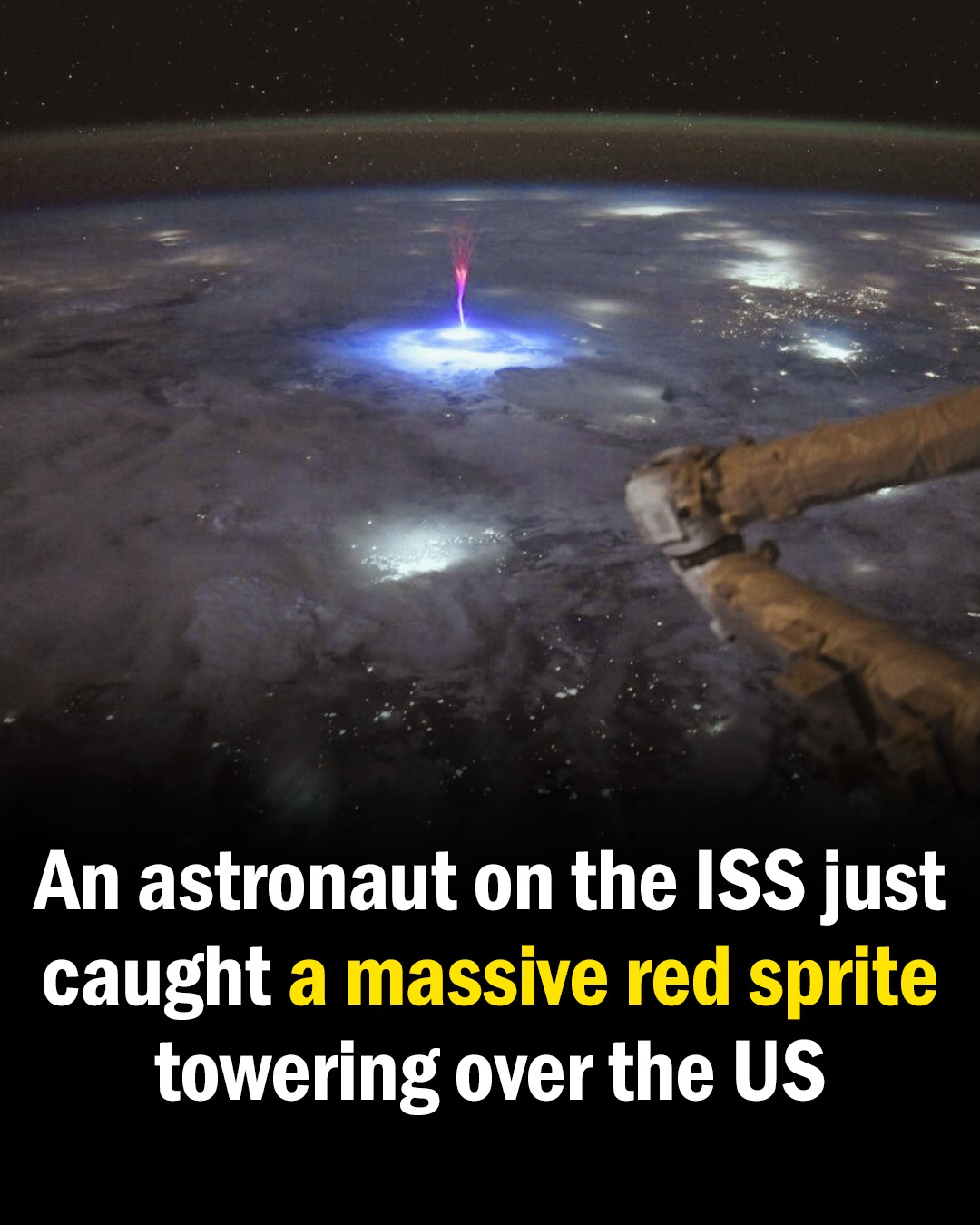Mystery in the Skies: Astronaut Snaps Ghostly ‘Jellyfish’ Lightning from Space
Out of nowhere, a sudden scarlet glow erupted high above a restless storm—too perfect, too surreal to be an ordinary flash of lightning.
From the vantage point of the International Space Station, astronaut Nichole Ayers caught sight of this eerie spectacle: a jellyfish-shaped blaze of red light pulsing silently against the dark canvas of the upper atmosphere.
For a moment, even she paused, caught between wonder and disbelief. What was this strange beacon floating above Earth—and why did it feel like a secret meant only for the cosmos?

A Glimpse of the Invisible: Sprite Lightning from Orbit
Picture yourself orbiting roughly 250 miles above Earth, the world turning beneath your feet as thunderstorms rage far below. Then, just as dawn breaks over Mexico and the southern United States, a fleeting, ghostly shape appears—a glowing red jellyfish pulsating in the mesosphere.
This is no ordinary lightning. What Ayers witnessed and immortalized in a breathtaking photo is called a sprite, a rare and enigmatic atmospheric phenomenon that defies everyday understanding.
What Exactly Are Sprites?
Sprites belong to a family of phenomena known as Transient Luminous Events (TLEs), spectacular electrical discharges high above thunderstorms. Unlike typical bolts of lightning that streak downward, sprites leap upwards—sometimes climbing as high as 50 miles into Earth’s upper atmosphere.
Their striking red hue comes from excited nitrogen molecules energized by powerful electrical fields. These ephemeral lights flash so briefly—often just a few milliseconds—that catching one on camera, especially from the ground, is a remarkable feat.
Why the Space Station Offers a Unique Window
From its lofty perch circling the globe every 90 minutes, the ISS provides a vantage point few humans ever experience. It offers a panoramic view of Earth’s swirling weather systems, far from city lights and atmospheric interference.
On this particular pass over Mexico and the southern U.S., Ayers spotted the sprite dancing above a massive thunderstorm. Her photo reveals it like a spectral mushroom, glowing intensely against the night sky—a silent pulse of nature’s electrifying beauty.
Beyond the Beauty: The Science of Sprites
Sprites aren’t just captivating—they’re crucial clues in understanding the dynamic relationship between Earth’s weather layers. Triggered by intense positive lightning strikes, sprites reveal how electrical energy transfers upward, bridging storm clouds and the mesosphere.
Studying sprites helps scientists decode:
The behavior of lightning during powerful storms
Interactions between atmospheric layers
Energy flows that affect weather and climate systems
Unlike conventional lightning, sprites are a form of “cold plasma,” producing little heat—a trait that adds to their mysterious nature.
A Phenomenon Long Hidden
First noted by pilots in the 1950s and photographed only in 1989, sprites remain one of the atmosphere’s rarest natural light shows. Thanks to astronauts like Ayers, who capture these elusive events from space, our understanding continues to grow.
Her image is more than a stunning photo—it’s a vital scientific document, shining light on one of Earth’s last atmospheric secrets.
Final Thoughts
In an era where humanity reaches for Mars and eavesdrops on distant galaxies, it’s easy to forget the extraordinary mysteries unfolding just above our heads. Sprite lightning reminds us that Earth itself is still a world of wonders—quiet, fleeting, and spectacular.
Next time a thunderstorm rumbles nearby, remember: just beyond the clouds, invisible marvels may be flickering silently in the dark—waiting for someone to look up and see.
